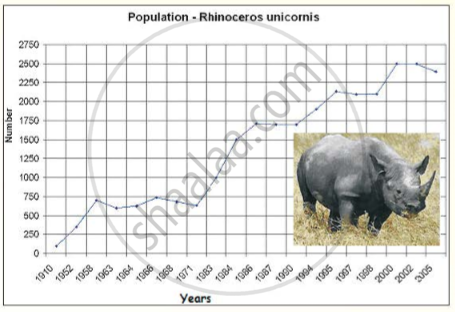Advertisements
Advertisements
प्रश्न
What does this passage say about the speaker?
उत्तर
The passage indicates a mature : understanding that the speaker has attained.
APPEARS IN
संबंधित प्रश्न
Answer of these question in a short paragraph (about 30 words).
How does Tommy describe the old kind of school?
Answer the question in a short paragraph.
What is the belief at Pashupatinath about the end of Kaliyug?
Why does grandfather take Toto to Saharanpur and how? Why does the ticket collector insist on calling Toto a dog?
Now rewrite the pair of sentences given below as one sentence.
What do you do after you finish the book? Perhaps you just throw it away.
On the basis of your understanding of the poem, answer the following question
by ticking the correct option.
The rain calls itself the 'dotted silver threads' as_________.
Parents alone are responsible for inculcating a good sense of dental hygiene
amongst children. Do you agree/disagree? Discuss with your partner
Given below is a map of the area in which Slava Kurilov faced his ordeal. You will also see the major events in the story, in mixed order, each accompanied by a symbol. After you have read 'Ordeal in the Ocean', draw the appropriate symbol against each x mark. (One is already drawn for you.) Draw the symbols or number the symbols, and transfer them to the map.)

Read this article about the great Indian Rhinoceros. [You will find the information useful for your group discussion in 5.]
The Indian Rhinoceros or the Great One-Horned Rhinoceros or the Asian Onehorned Rhinoceros (Rhinoceros unicomis) is a large mammal primarily found in north-eastern India, Nepal and parts of Bhutan. It is confined to the tall grasslands and forests in the foothills of the Himalayas.
The Indian Rhinoceros once ranged throughout the entire stretch of the Indo Gangetic Plain but excessive hunting reduced their natural habitat drastically.
Today, about 3,000 Indian Rhinos live in the wild, 1,800 of which are found in Assam alone. In 2008, more than 400 Indian Rhinos were sighted in Nepal's Chitwan National Park.
In size it is equal to that of the White Rhino in Africa; together they are the largest of all rhino species. The Great One-Horned Rhinoceros has a single horn; this is present in both males and females, but not on newborn young. In most adults, the horn reachee a length of about 25 centimetres, but has been recorded up to 57 .2 centimetres in length. The nasal hom curves backwards from the nose. The horn is naturally black.
This prehistoric-looking rhinoceros bas thick, silver-brown skin which becomes pinkish near the large skin folds that cover its body. The male develops thick neckfolds. It has very little body hair aside from eyelashes, ear-fringes and tail-brush.
These rhinos live in tall grasslands and riverine forests, but due to the loss of habitat, they have been forced towards cultivated land. They are mostly solitary creatures, with the exception of mothers and calves and breeding pairs, although they sometimes, congregate at bathing areas.

The Indian Rhinoceros makes a wide variety of vocalizations. At least ten distinct vocalizations have been identified: snorting, honking, bleating, roaring, squeak panting, moo-grunting, shrieking, groaning, rumbling and humphing. In addition to noises, the rhino also uses olfactory communication.
In aggregation, Indian Rhinos are often friendly. They will often greet each other by waving or bobbing their heads, mounting flanks, nuzzling noses, or licking. Rhinos will playfully spar, run around, and play with twigs in their mouth. Adult males are the primary instigators of fights. Fights between dominant males are the most common cause of rhino mortality. Indian rhinos have few natural enemies, except for tigers. Tigers sometimes kill unguarded calves, but adult rhinos are less vulnerable due to their size. Humans are the only other animal threat, hunting the rhinoceros primarily for sport or for the use of its horn. Indian Rhinos have been somewhat tamed and trained in circuses, but they remain dangerous and unpredictable animals.
In the nineteenth and early twentieth century, the Indian Rhinoceros was hunted relentlessly. Reports from the middle of the nineteenth century claim that some military officers in Assam individually shot more than 200 rhinos. In the early 1900s, officials became concerned at the rhinos' plummeting numbers. By 1908 in Kaziranga, one of the Rhinos' main ranges, the population had fallen to around 12 individuals. In 1910, all rhino hunting in India became prohibited.
The rhino has been a major success in conservation. Only 100 remained in the early 1900s; a century later, their population has increased to about 2500 again, but even so, the species is still endangered. The Indian rhino is illegally poached for its horn. Some cultures in East Asia believe that the hair has healing and potency powers and therefore is used for traditional Chinese medicine and other Oriental medicines.
The Indian and Nepalese Governments have taken major steps towards Indian Rhinoceros conservation with the help of the World Wildlife Fund (WWF). The Kaziranga National Park and Manas National Park in Assam, Pobitora Reserve Forest in Assam {having the highest Indian rhino density in the world), Orang National Park of Assam, Laokhowa Reserve Forest of Assam (having a very small population) and Royal Chitwan National Park in Nepal are homes to this endangered animal.
Bangle sellers are we who bear
Our shining loads to the temple fair...
Who will buy these delicate, bright
Rainbow-tinted circles of light?
Lustrous tokens of radiant lives,
For happy daughters and happy wives.
Read the lines given above and answer the question that follow.
How are the bangles described in the first stanza of the poem?
Answer the following question.
Name two things the elephant can do with his trunk, and two he cannot.
What did Tilloo hope to see once he emerged from his underground home?
How did the king and the hermit help the wounded man?
Discuss in small groups
• If you want to give away something of your own to the needy, would it be better to ask your elders first?
Mr Gessler in his last wasn’t in good health. Give three examples to prove this.
What made Nishad turn sympathetic towards Mr Nath?
With the help of your partner, try to rewrite some lines in the poem, or add new ones of your own as in the following examples.
Trees are for birds to build nests in. Trees are for people to sit under.
Now try to compose a similar poem about water, or air
Multiple Choice Question:
When do strange questions strike the poet?
Answer the following question:
In what way did the shopkeeper make a fool of Rasheed?
Analyse the comparison between death and sleep in the poem, Death Be Not Proud. How does this metaphor contribute to the overall message of the sonnet? Write your answer in about 200-250 words.
The poem Beethoven explores the role of pain and suffering in the process of artistic creativity and excellence. Justify this statement in 200-250 words.
